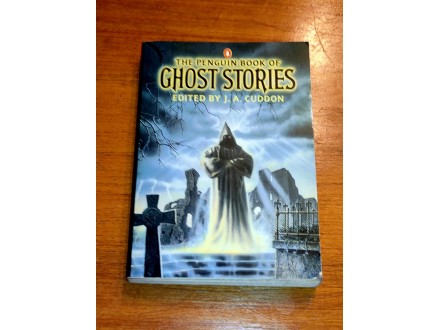The Penguin Book of Ghost Stories
| Cena: |
| Želi ovaj predmet: | 7 |
| Stanje: | Polovan bez oštećenja |
| Garancija: | Ne |
| Isporuka: | Pošta Post Express Lično preuzimanje |
| Plaćanje: | Tekući račun (pre slanja) Lično |
| Grad: |
Novi Beograd, Beograd-Novi Beograd |
Godina izdanja: Ostalo
ISBN: Ostalo
Jezik: Engleski
Autor: Strani
512 pages
This book was published in 1984 and contained 33 short stories by as many writers. The pieces ranged from 1810 to the 1980s, with the majority from the 1890s to 1960s. Nearly two-thirds of the stories in the book were from the 20th century.
For the editor, a ghost story contained a spirit of one or more persons showing itself or seeming to do so, haunting a place, person or thing. For some reason, poltergeists were excluded. The greatest works were those that went beyond entertainment to explore states of consciousness, examine appearance and reality, the meaning of existence and the dark side of the mind.
There were 20 writers in the collection from Great Britain, 4 from the U.S., 3 each from France and Germany, and 1 each from Ireland, Russia and Italy. Ten of the authors were women. From the early to mid-1800s, there were Kleist, Hoffmann, Pushkin, Walter Scott, Elizabeth Gaskell and Margaret Oliphant.
From the late 19th century up through World War II, there were LeFanu, Maupassant, Zola, Mann, Henry James, Bierce, Wharton, Kipling, Wells, Blackwell, M. R. James, Benson and Bradbury. Lesser-known writers from this period included Ann Bridge and A. M. Burrage.
Those after World War II included Muriel Spark, Penelope Fitzgerald and A. S. Byatt. Among the others were Marghanita Laski, Fielden Hughes, Elizabeth Walter, George Mackay Brown, Alain Danielou and Mario Soldati.
In a lengthy introduction to the tales, the editor surveyed antecedents in Roman literature, the Bible, historical records and oral tales of the Middle Ages, Chaucer, Froissart, the Tudor and Jacobean dramatists, ballads, folklore, Defoe, and English and German Gothic writers. The early modern ghost stories in Europe were fictional creations by Kleist and Hoffmann in the early 1800s: to the conventional depiction of a haunted place, they added a sense of the past, artful descriptions of customs, characters and social relations, the buildup of a sinister atmosphere and an ironic tone.
Later works by Irving, Poe, Pushkin, Dickens, LeFanu and others brought the genre to the 1870s, by which time it had been fully established. By then, it was `almost as if [ghost stories] were beginning to fulfill a kind of spiritual need; as if the possibility of ghosts was a reassurance of an after-life.` For the editor, the great authors in the field were LeFanu, Henry James, De La Mare and M. R. James; he saw no contemporary writer to rival their achievement.
The classic pieces in the collection included `The Queen of Spades,` `The Horla,` `The Moonlit Road,` `The Room in the Tower,` and maybe `Mr. Justice Harbottle` and `Afterward.` These were among the most impressive for this reader. `The Queen of Spades` by Pushkin told a ghost story and poked fun at the nobility and human greed. `The Moonlit Road` by Bierce described a series of tragic events from multiple, conflicting points of view; it may well have been one of the inspirations behind Akutagawa`s `In a Grove,` filmed later as Rashomon. `The Room in the Tower` by Benson described a sinister dream and suggested dreadful inevitability in ways that can`t easily be forgotten.
Of the others, `The Buick Saloon` by Ann Bridge was an ironic tale set in Peking among the British community. `Angeline or the Haunted House` by Zola, described as that author`s only ghost story, described the conflicting rumors behind the creation of a haunting. `The Open Door` by Margaret Oliphant, written in the 1860s, was notable for including a rare demonstration of religious faith confident in the face of a haunting, as well as a sort of exorcism. `Footsteps in the Snow` by Soldati, in which a man recalled a lost love, was both funny and sad. `The Axe` by Fitzgerald was set in the modern business world and depicted the familiar case of a devoted worker who got the boot. Many of the other stories, though, were fairly tame.
Among the authors absent from the anthology: Robert Aickman, William Sansom and Vernon Lee. It was surprising to see Poe omitted from a horror anthology, but the editor claimed that Poe was somewhat overrated despite his influence, and that his best stories had to do with horror and suspense, not ghosts.
Ako želite slanje kao CC PAKET, a ono nije posebno navedeno, samo zatražite u napomeni.
Knjige starije od 50 godina, kao i knjige objavljene ove godine ne šaljem u inostranstvo zbog komplikovane carinske procedure.
Predmet: 72616377









